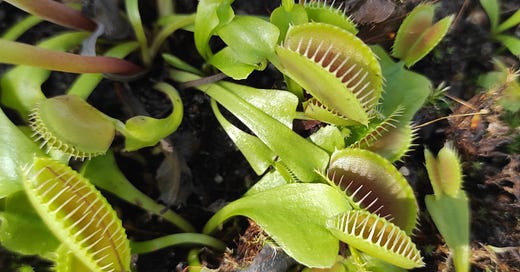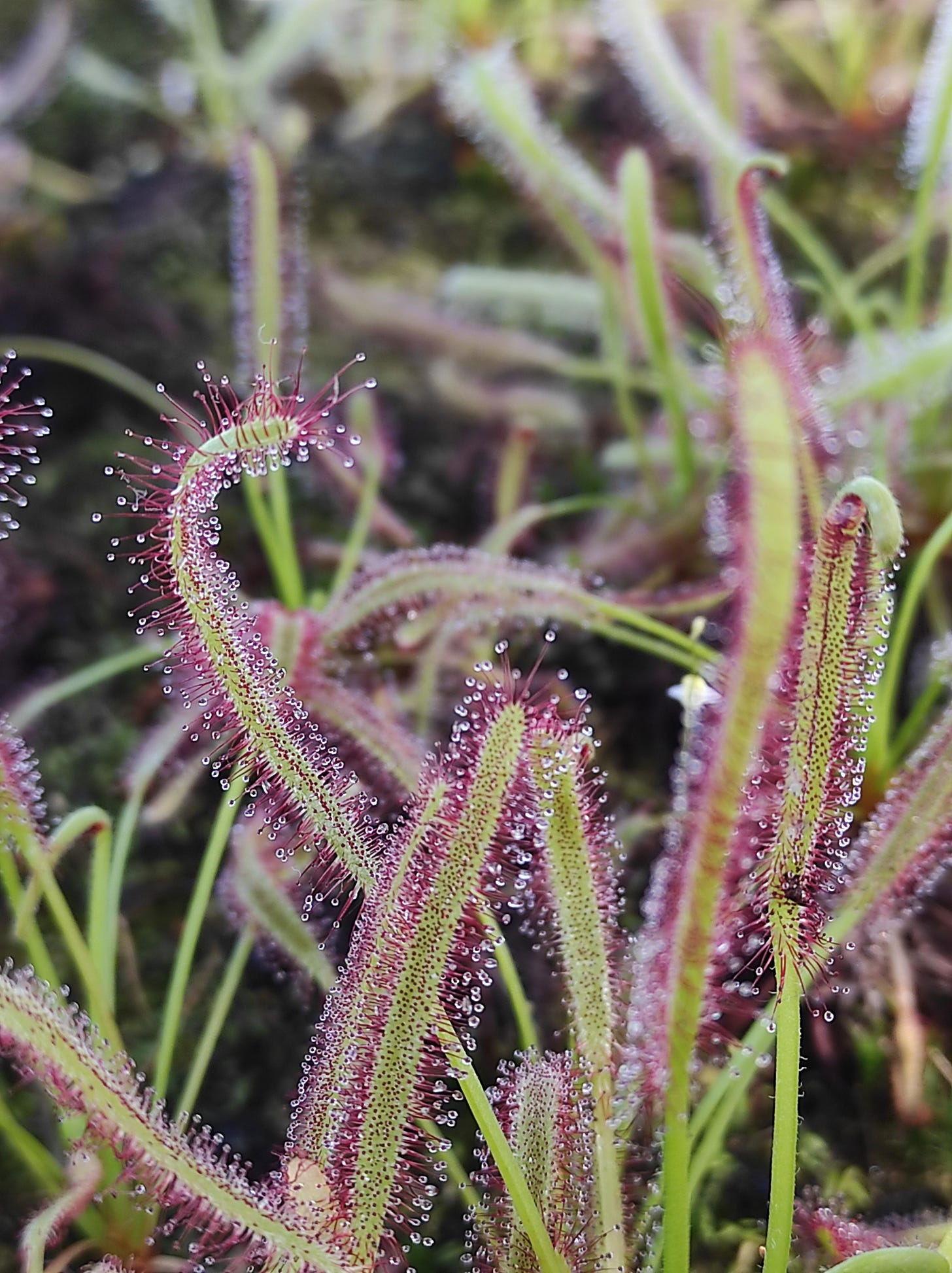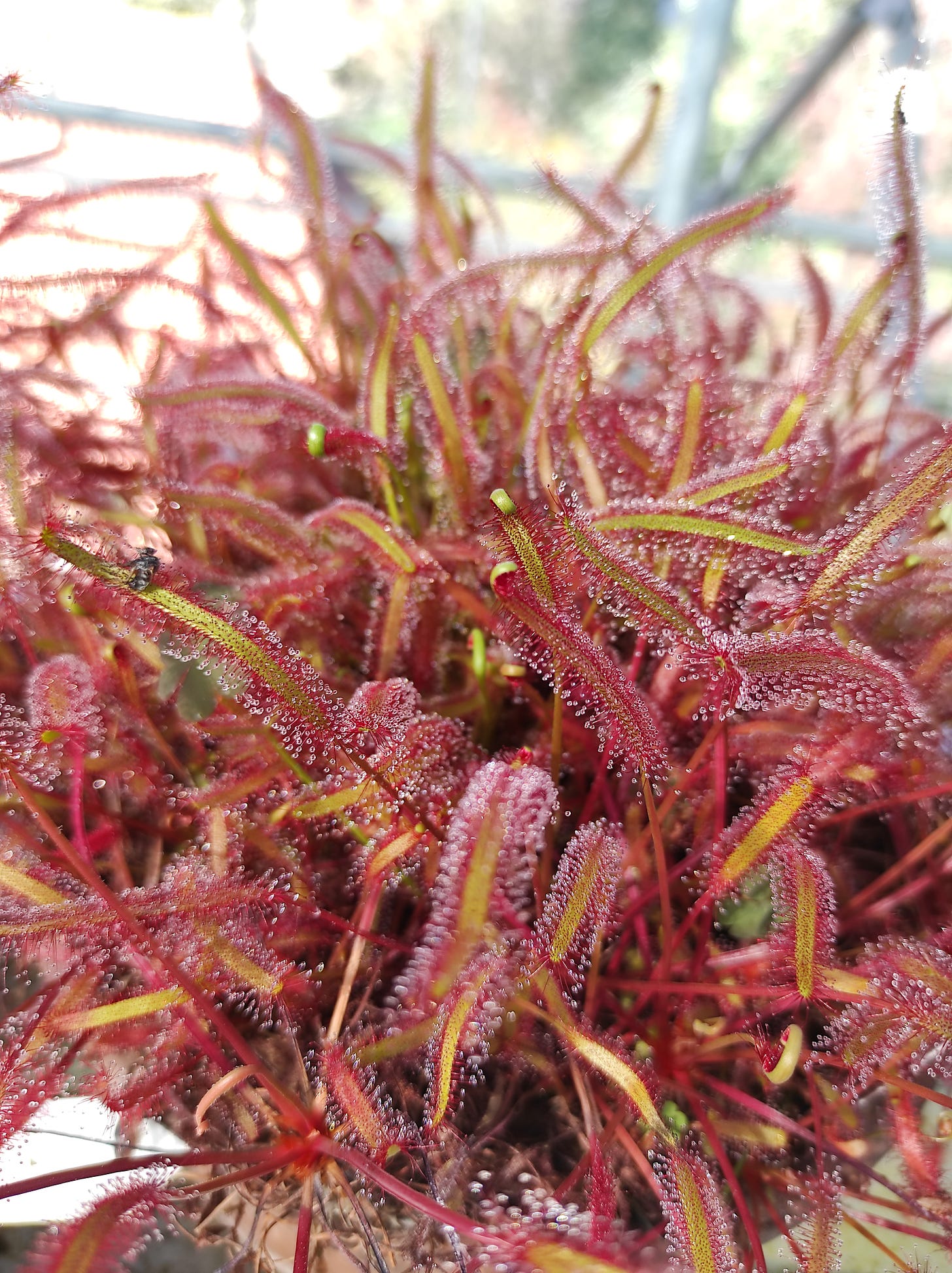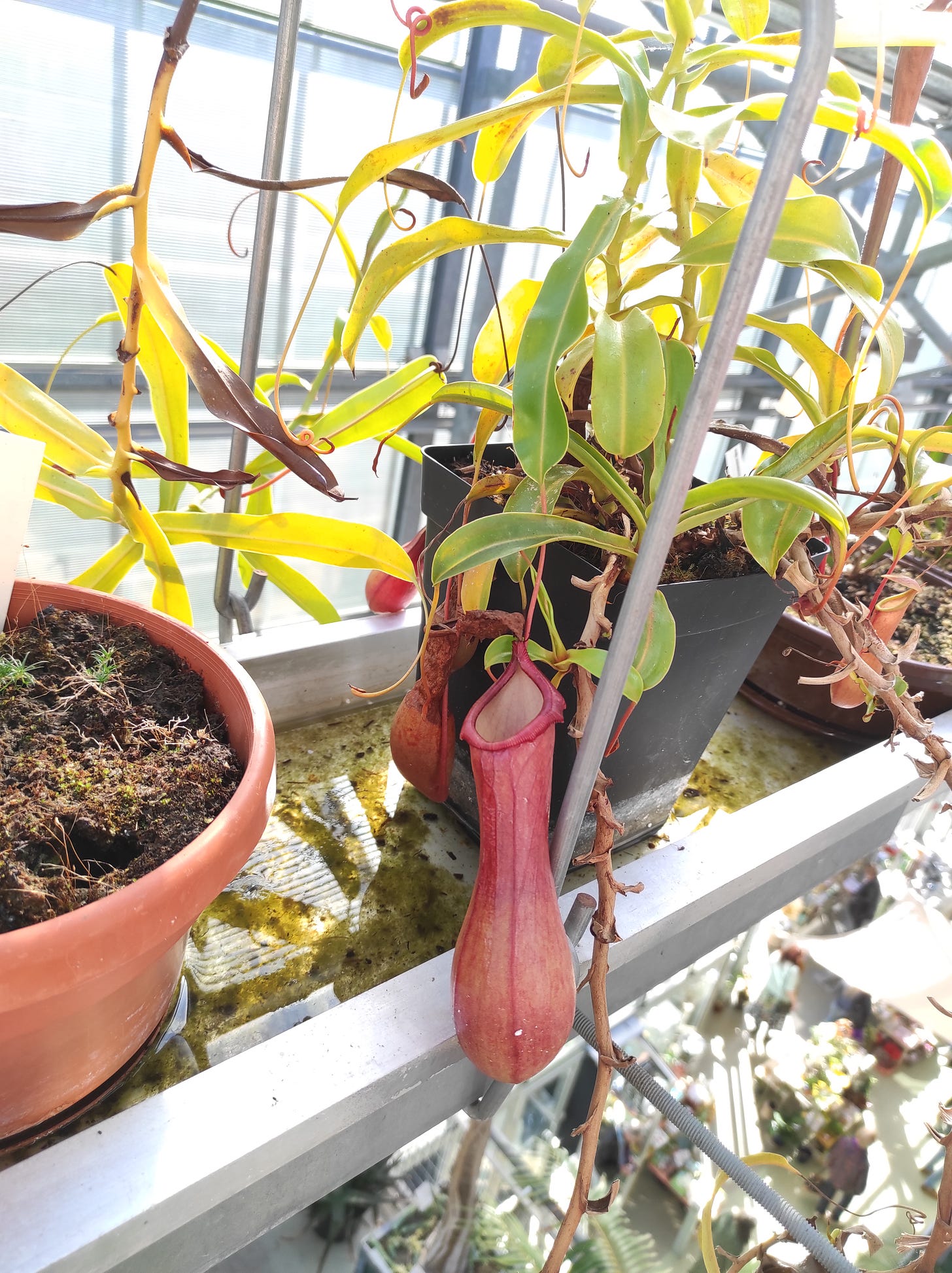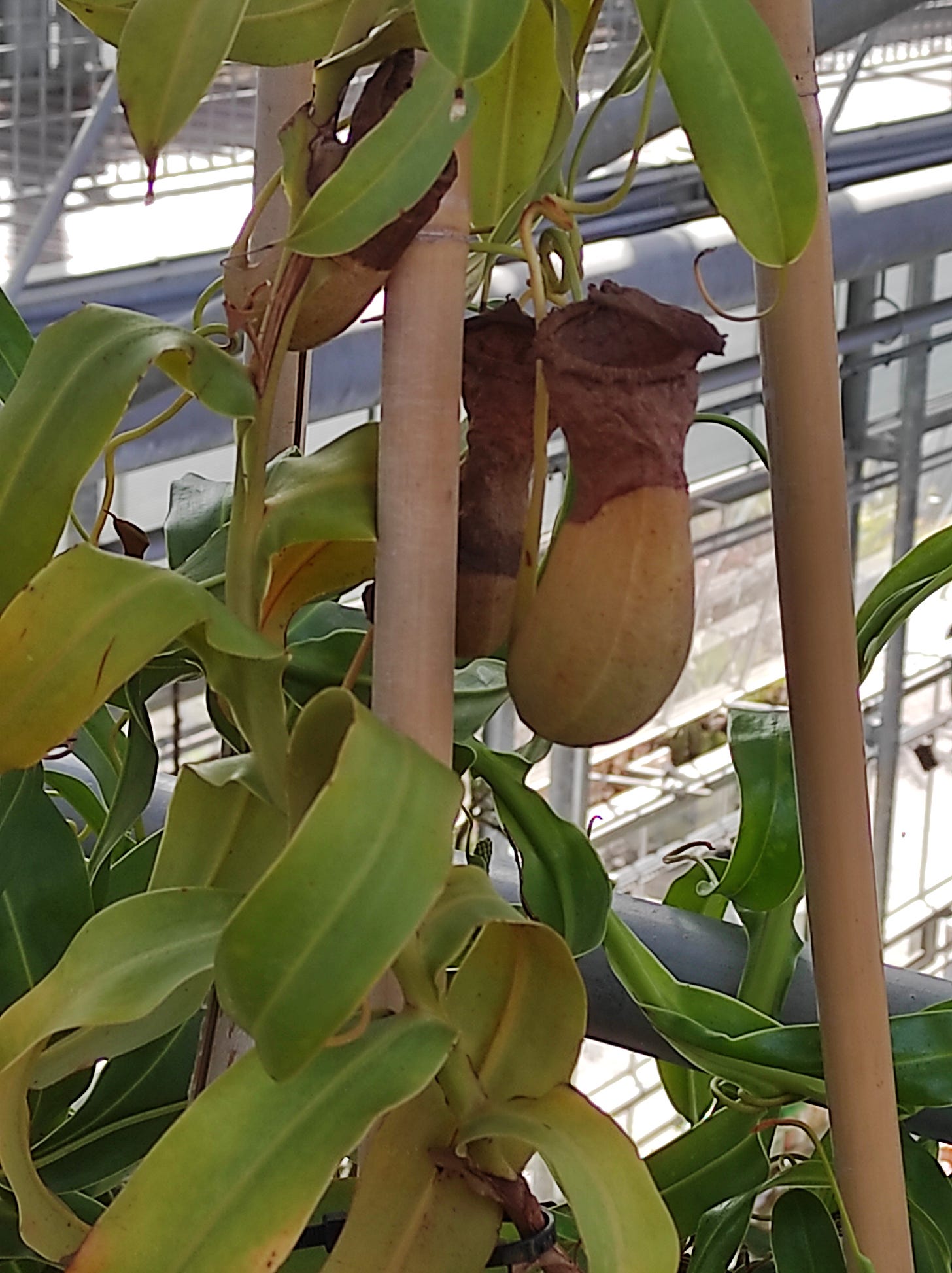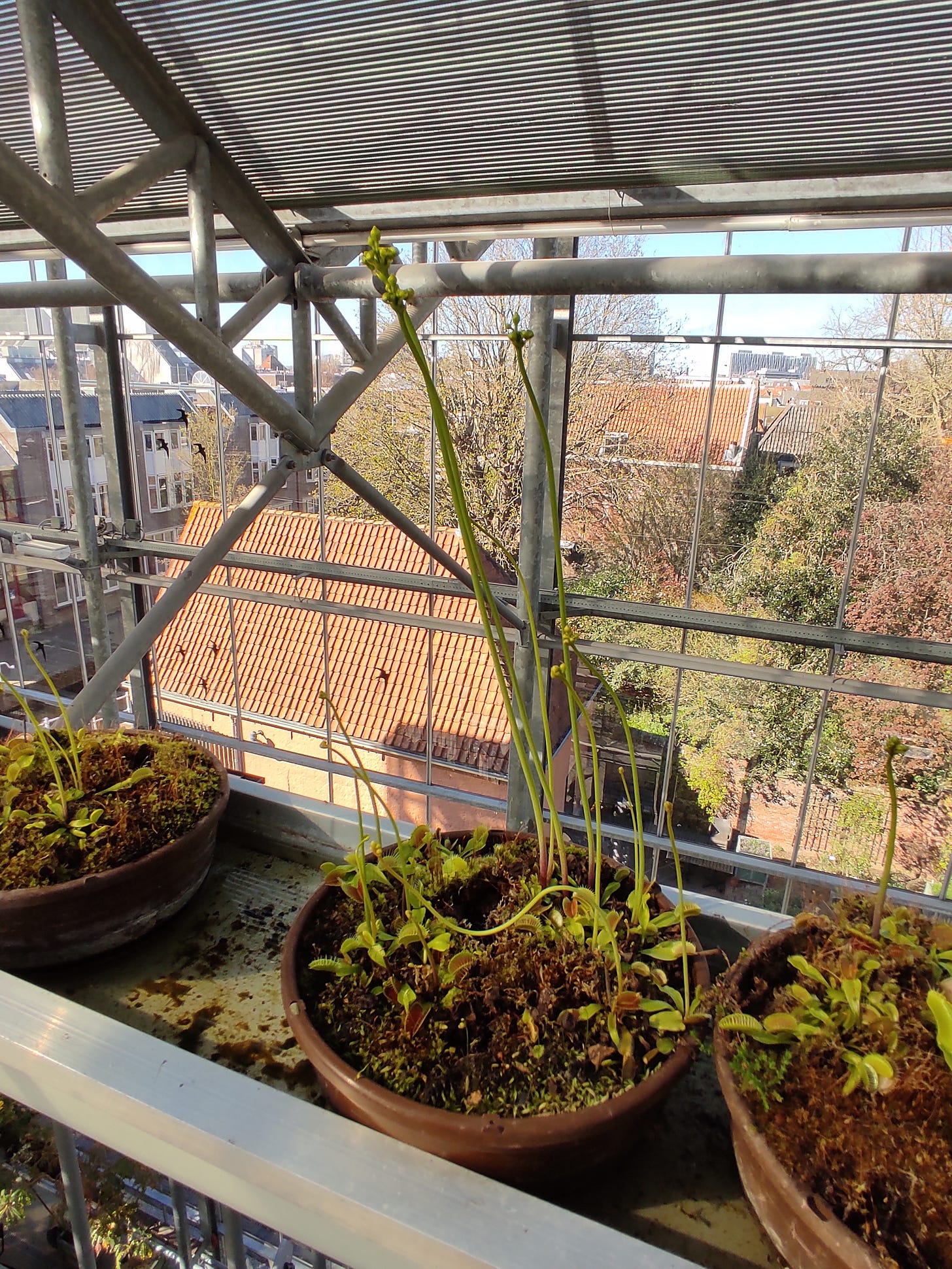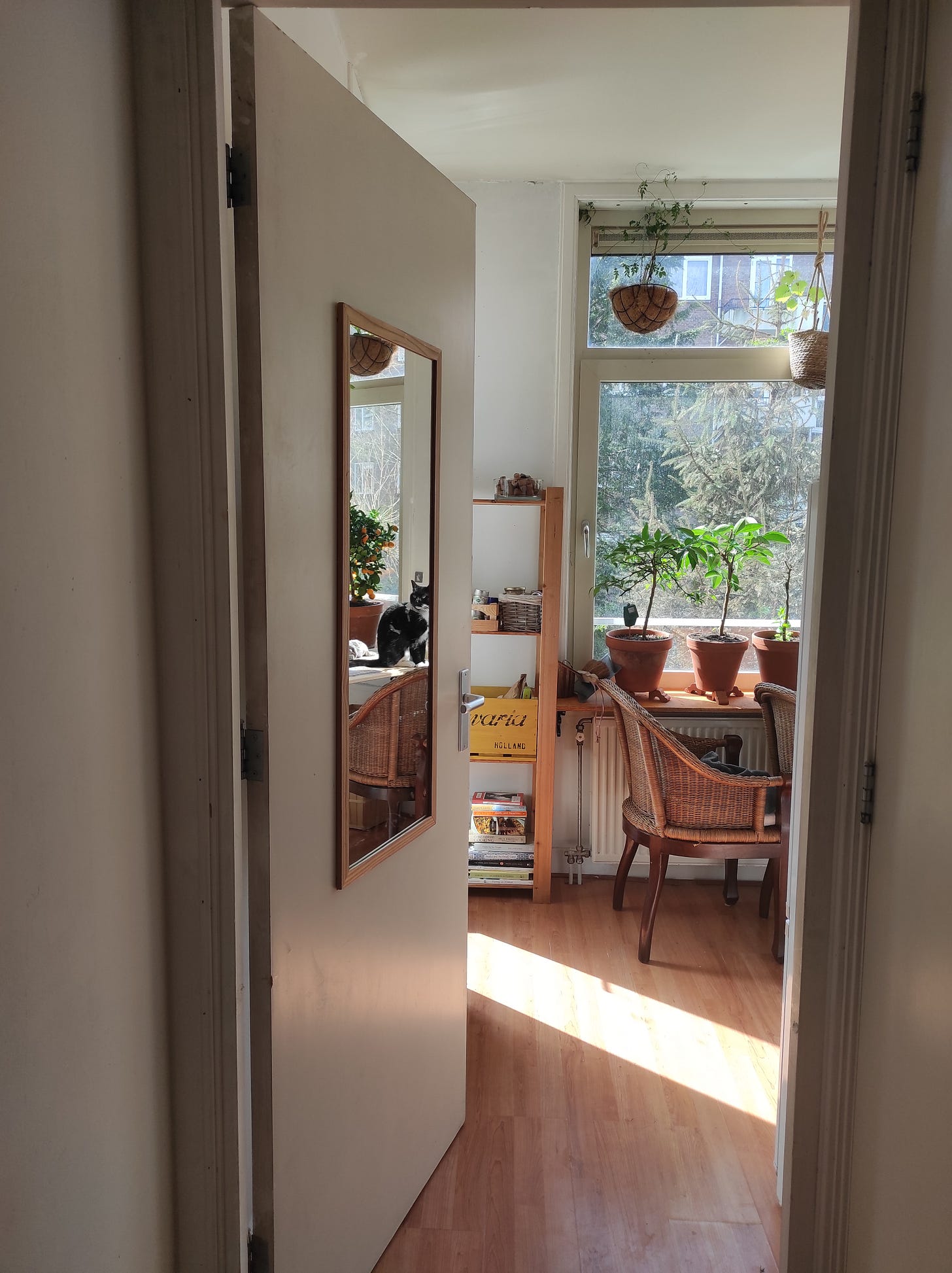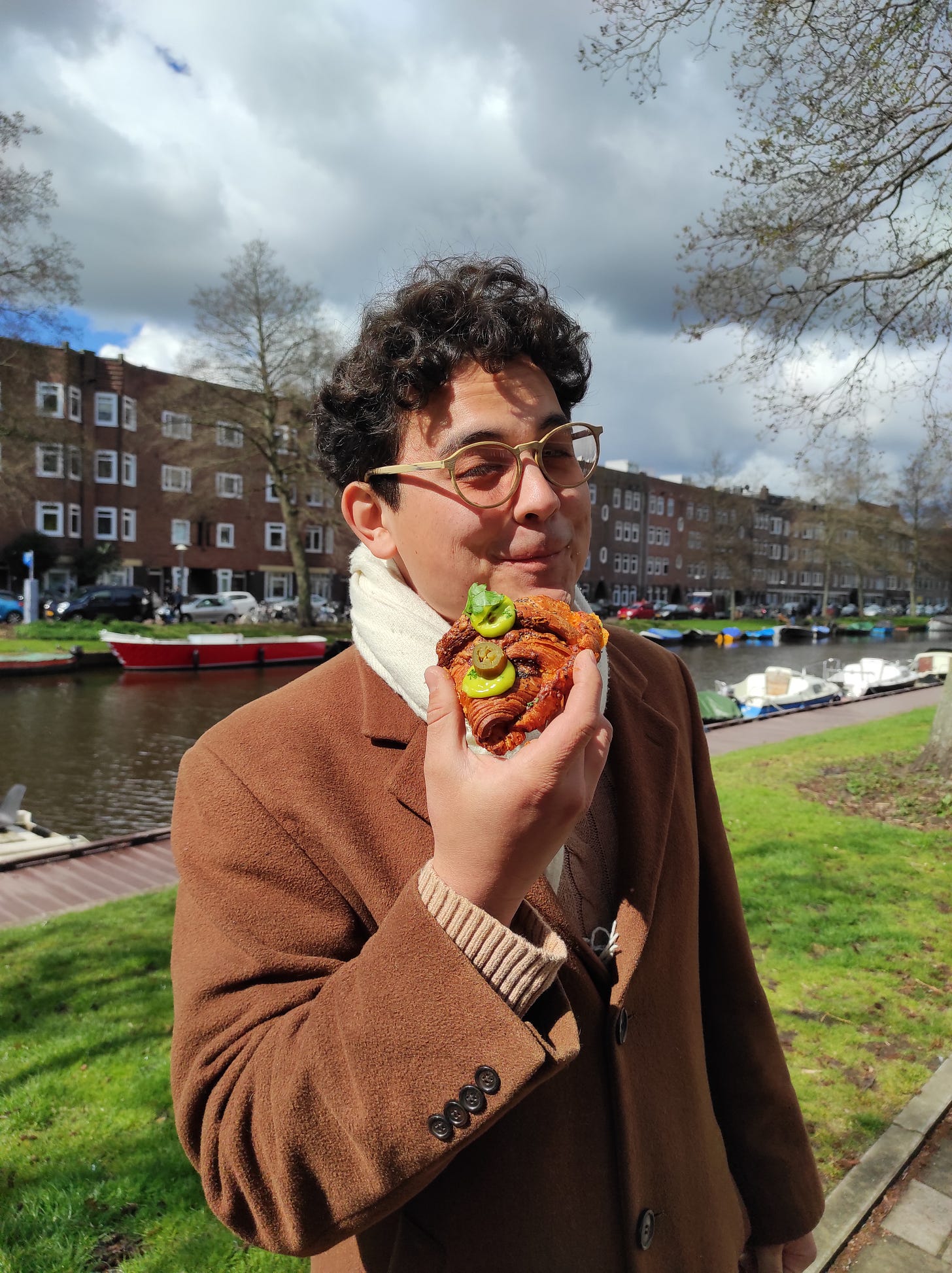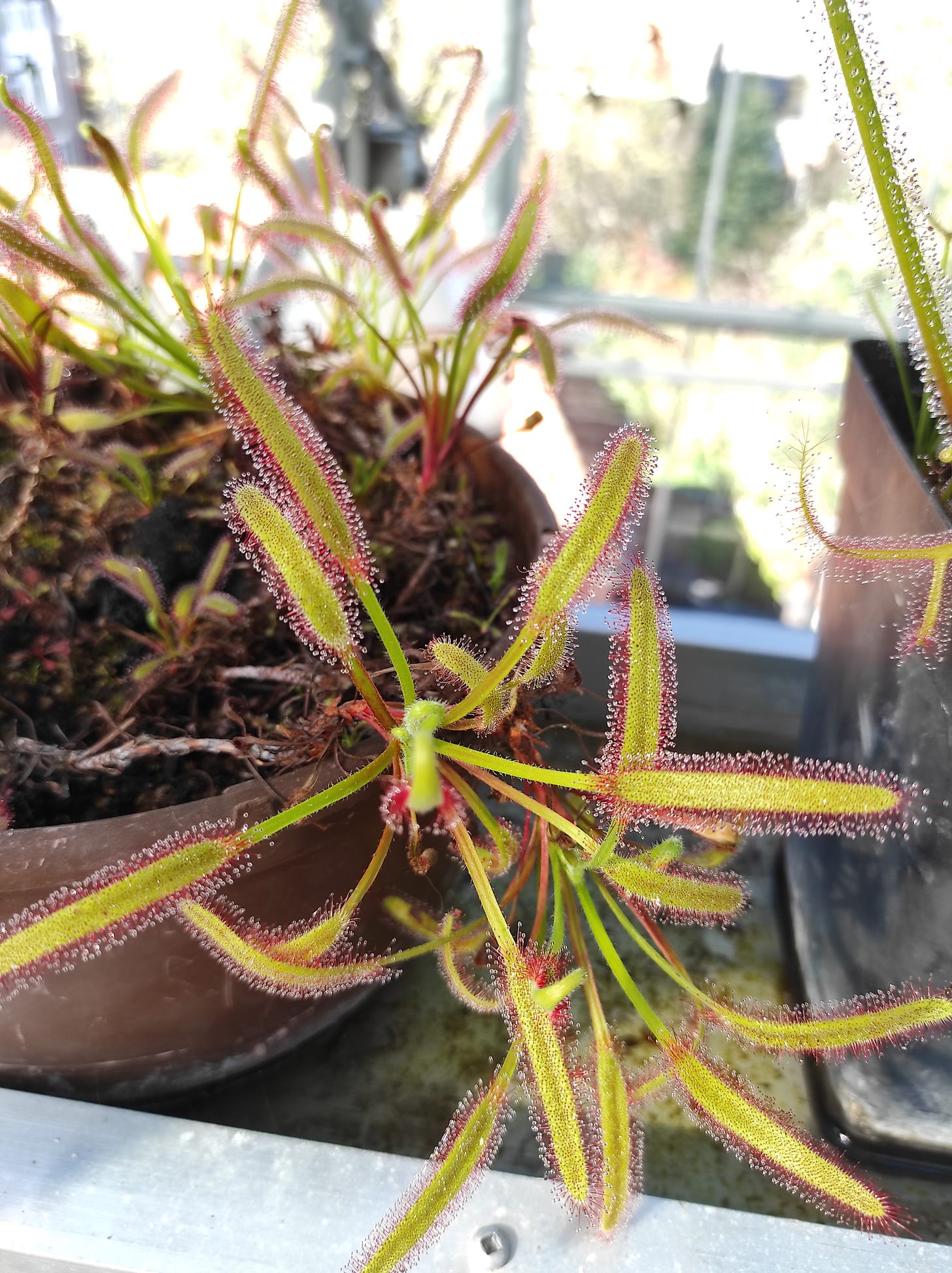24. Carnivores of the Plant World
Gossip Amongst Fronds is a free Sunday newsletter. If you love it, consider supporting it financially. For €5/month, you’ll gain access to my sporadic plant advice column, simple seasonal recipe, and occasional podcast where I interview like-minded creatives. Thank you for being here!
In preparation for summer (even though it snowed again this morning - but melted again soon after), I thought I might chat about carnivorous plants this weekend. Often selling out during high summer swampy nights across nurseries in the Netherlands, carnivorous plants, and it’s complimentary citronella geranium, are quite a hot commodity. These plants come in handy to combat the insects who thrive in the sticky heat of the summertime. I will jump more into how to cultivate your own mosquito repellant garden at a later point since I find using them for that purpose bewitching and much less carcinogenic than DEET (obviously). For today, I will just broach the topic of these meat loving plants.
I have always been fascinated with carnivorous plants. We view plants as peaceful, pastoral, the opposite of violence. However we forget about these predatory extroverted carnivores of the plant world, who lure in their prey and move with ease. The world of carnivorous plants is much deeper than can be outlined in just a newsletter so keep in mind each species mentioned contains a variety of different forms, detailed with their own mood swings and personalities. I will just cover three that tend to dominate the realm of mainstream plant carnivore knowledge.
Drosera (Sundew)
I had actually never noticed this carnivorous plant until a recent trip to the Hortus Botanicus in Leiden last weekend. They were proliferating through the water troughs in the upper echelon of one of the greenhouses and I was entranced. Looking positively alien and beautiful, these plants contain sticky tentacles (digestive glands) that attract insects with their diamond-like glow in the sun and chemical scent. Once captured, the tentacle curls and traps the victim, fully immersing them with more digestive glands. The tentacles eventually drain the nutrients from the insect, leaving only the armour behind. Lovely. Digestion can take at least 6 hours, if not more, depending on the species of the victim.
The most menacing of the three, mainly due to Nepenthes Attenboroughii (Attenborough’s pitcher plant). A pitcher plant can grow up to several metres in size and digest small rodents/other unlucky trespassers. I started to google photographs and videos and honestly freaked myself out so I will spare you the photographic evidence, which is now burned in my memory and will for sure creep my nightmares.
Prey are drawn to the nectar from the Pitcher plant, once they land on the slippery lip of the plant they fall into the pitcher and become trapped. They drown in the liquid of enzyme and water and are digested by the plant.
Although massively intimidating, the pitcher plant is fairly harmless for humans and most domestic pets (maybe keep your hamsters away). You can even drink the rainwater, which fills the jugs and mixes with its digestive juices (phytotelmata). Some even believe it might be medicinal for humans. Who knows, possibly the new digestive enzyme trend.
The pitchers were looking a bit worse for wear in comparison to the other carnivores in the greenhouse. Perhaps some pitchers were nearing the end of their lives. The plants can live quite long but the pitcher itself can only live a year or two.
Speaking of the edible aspects of pitcher plants, lemang periuk kera - a Malay dish, involves cleaning out the pitchers, filling them with rice and placing them upright in a steamer filled with coconut milk. The contents are then steamed for about an hour and if made with the common swamp pitcher, the plant becomes tender enough to eat the dish whole. An easy enough recipe to try if you happen to have a plethora of pitchers milling about.
The most common of the three and a fixture at a lot of plant nurseries (from what I have seen around Europe). When in Capbreton (France) last summer, there was an older man selling plant carnivores as an eco-friendly alternative to mosquito repellants at the farmer’s market. Having bought a couple venus flytraps myself over the years to avoid the bedside mosquito bites that haunt summer nights, I was intrigued. We chatted (through Nico the translator) and I lamented over their winter death, rebirth and death again. The man reinstated the importance of sunshine and constant flow of water underneath (like the troughs of water in the Hortus). He laughed and said that without supplementation of sunlight, these plants would suffer greatly in The Netherlands. That explains them ultimately giving up in the end, sorry venus queens.
These mouth-like plants attract their prey with a sweet smelling nectar, which lines the hairy reddish blush inside of the ‘mouth’. Once the victim lands on the plant, the highly sensitive hairs can feel the weight of the prey. This activates the plant to snap shut and slowly start digesting the insect.
The only photograph I could find of one of my venus flytraps, you can see if you squint at the glass. Unless we end up with an extremely sunny summer (we did not last year), I might do without venus queens this year and instead try my attempts at pitcher plants.
Some things nourishing me this week:
Not the bouts of snow that have been showing up. Of course right after the week I planted my dahlias….
The routine sunshine that follows quickly to melt the snow is much appreciated
Unnecessarily gentrified croissants that are of course delicious albeit ridiculous. Who knew we needed jalapeño mousse on breakfast food.
The last of the cherry blossoms before the sudden drop in temperature helped them disappear
The queen, who probably won’t be too happy with some Ukranian foster pups we are taking in over the next month. If you live in NL/DE/B and have space to foster some animals, DM me on instagram.
The next month will be quite hectic on our front as we welcome some friends, family, and rescue doggos. We plan on taking in the Keuekenhof since it has been closed due to covid for the past two years. Hopefully the snow has not affected the gardens there. Wishing everyone all the best and hopefully no sudden weather patterns interrupt your spring planting plans!
Know someone else interested in carnivorous plants?
Still not subscribed?

